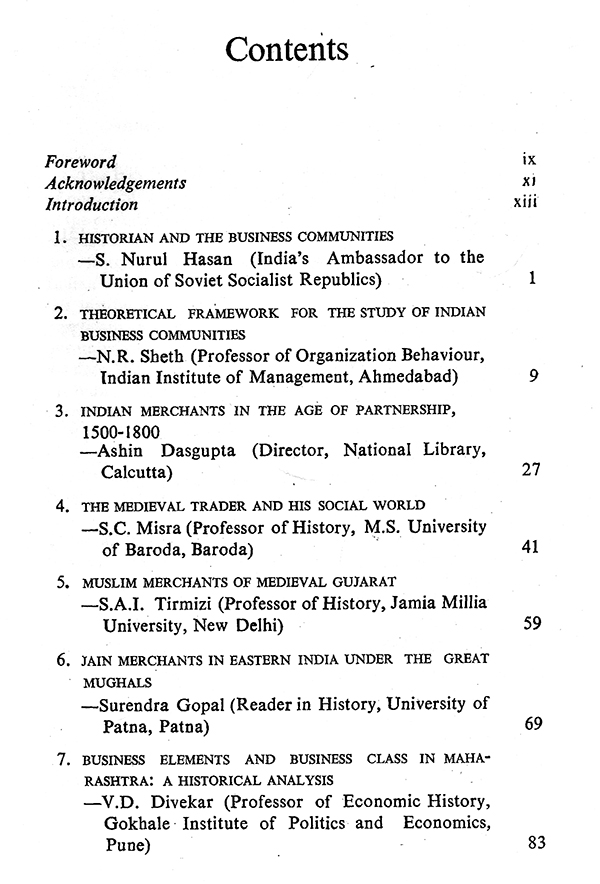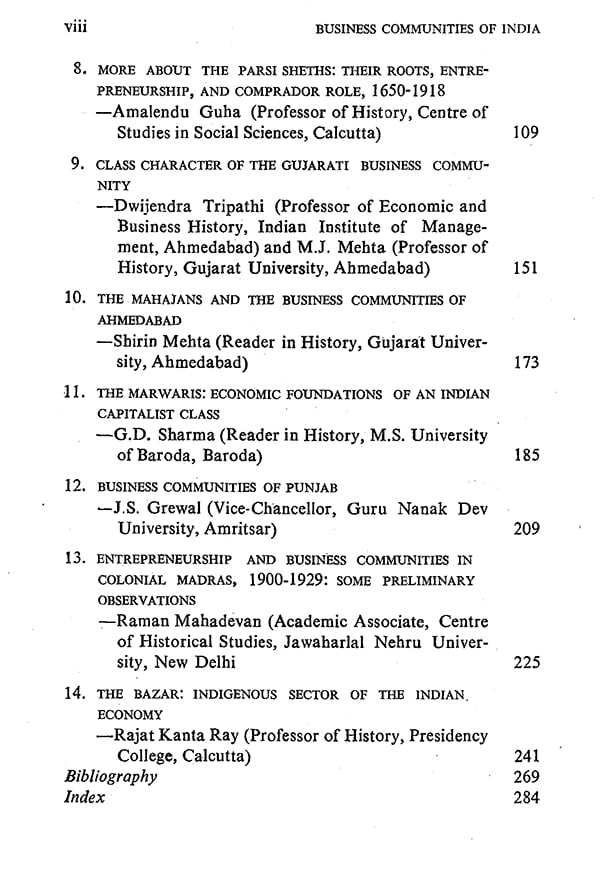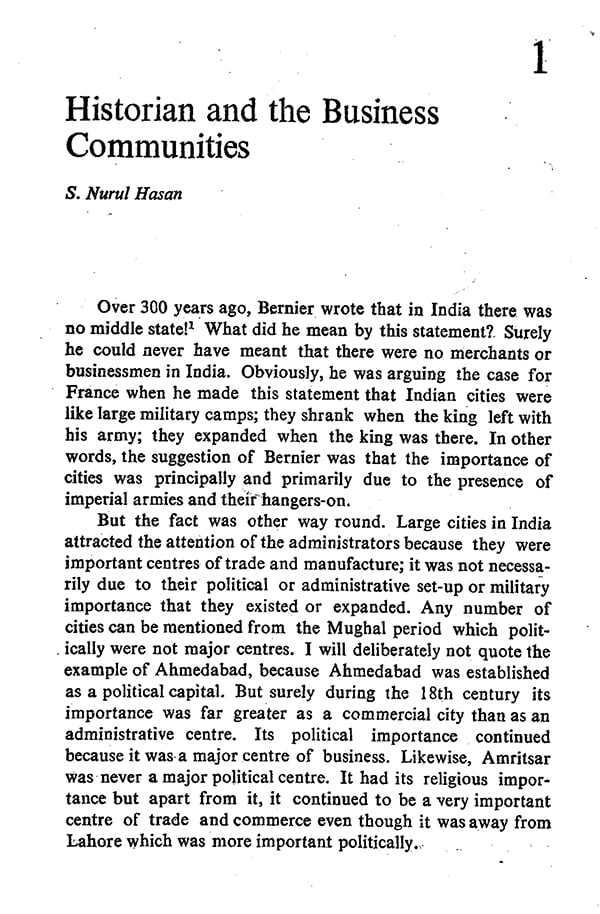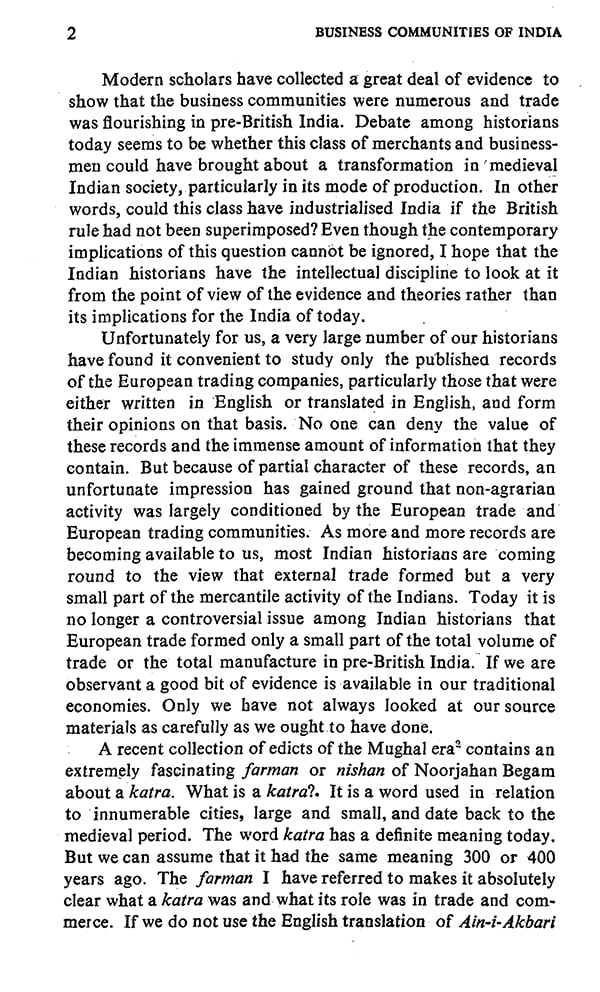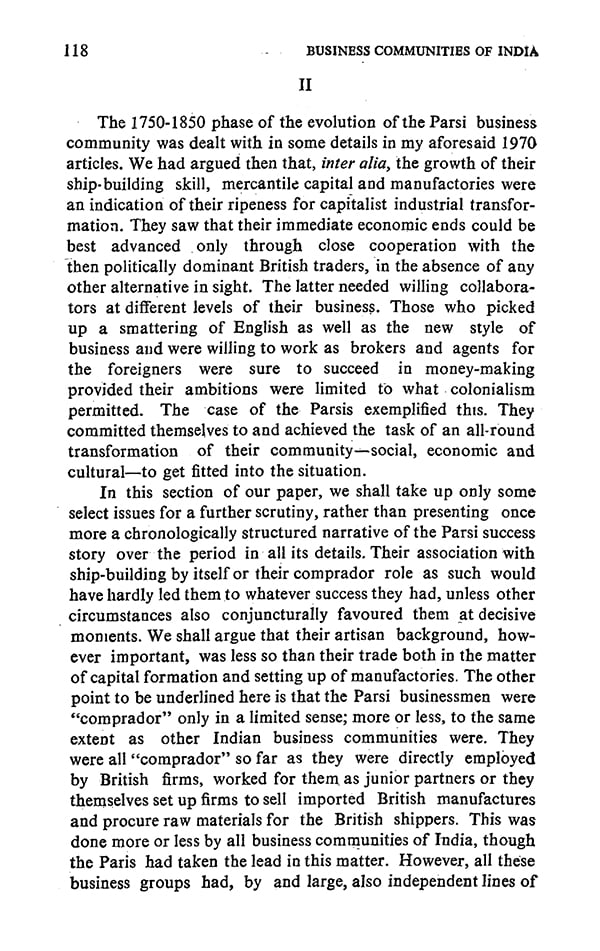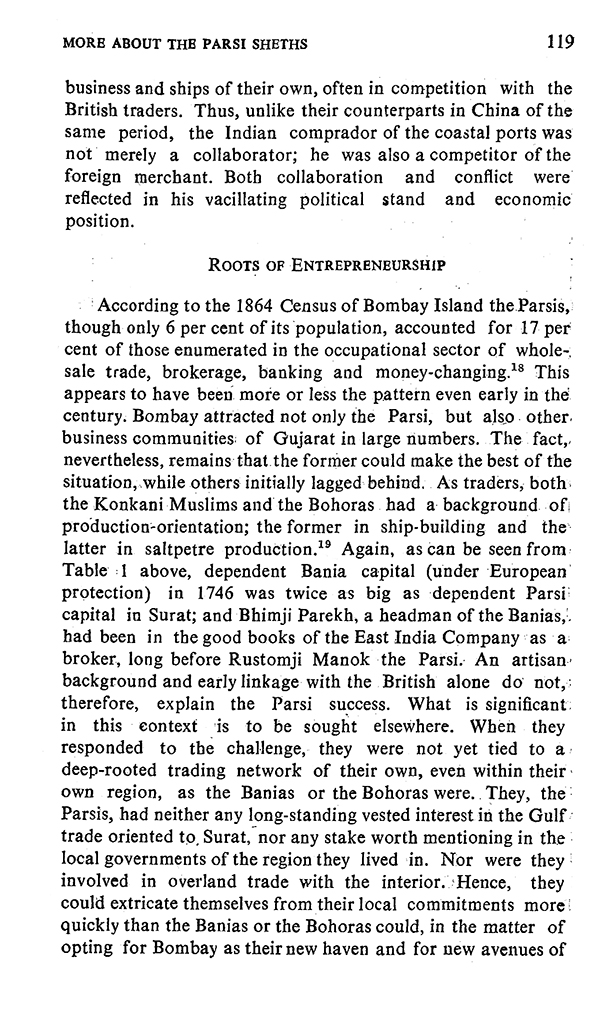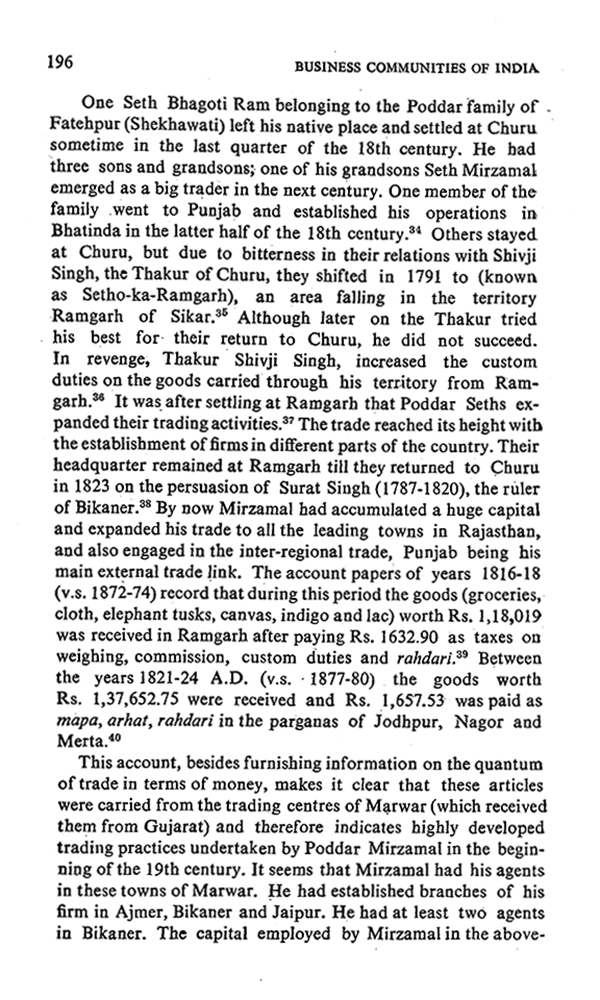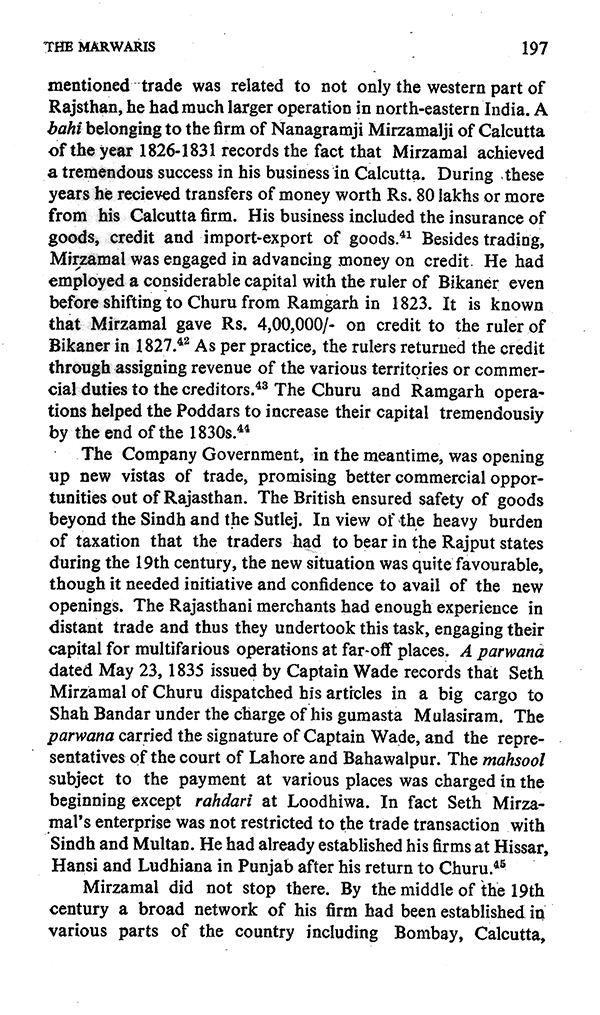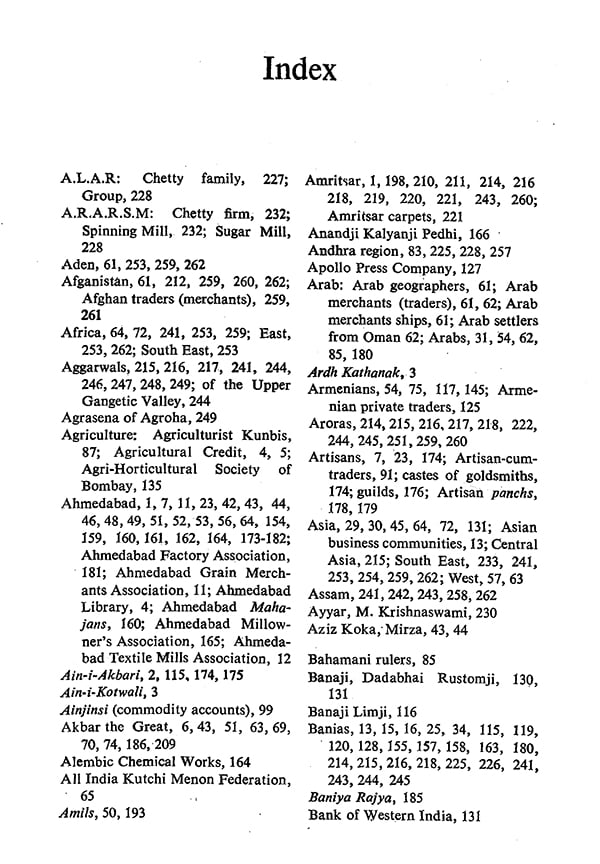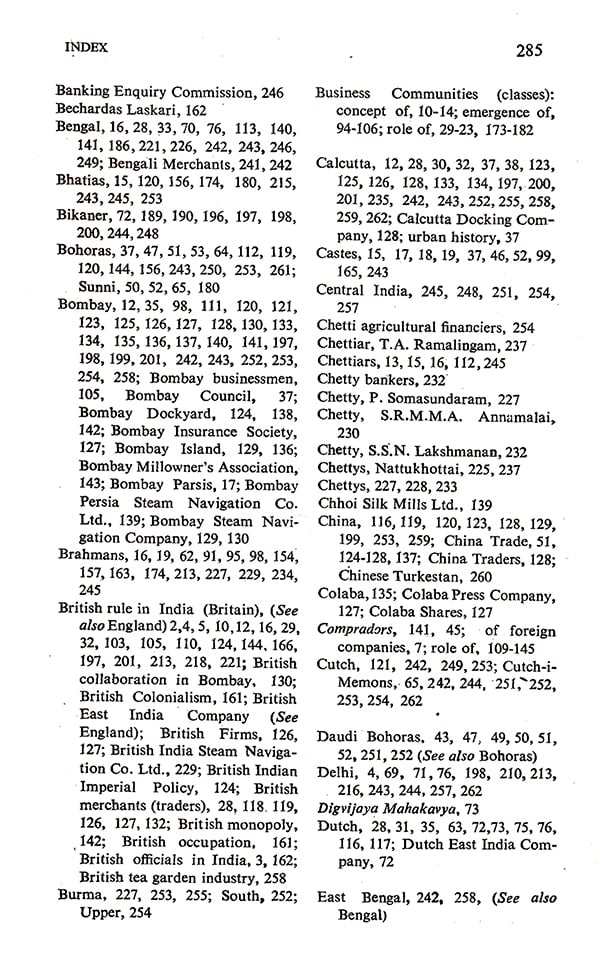
Business Communities of India
Book Specification
| Item Code: | NAZ159 |
| Author: | Dwijendra Tripathi |
| Publisher: | Manohar Publishers and Distributors |
| Language: | English |
| Edition: | 2020 |
| ISBN: | 9789388540834 |
| Pages: | 289 |
| Cover: | HARDCOVER |
| Other Details | 9.00 X 6.00 inch |
| Weight | 410 gm |
Book Description
Even though there has been considerable debate on Indian business communities in the last few years, we still do not yet have any study dealing with their historical role in the economic life of the country. The present volume is intended to fill this gap. It is a collection of essays, giving a close, hard look at each of the communities which are prominent in Indian business today. Written by some of India's most outstanding historians, the essays trace the evolution of these communities over a period of time and, thus, seek to determine the social composition of the Indian business class.
Business Communities of India, thus, is a unique contribution not only in the business history but also the social history of India. Based on solid historical data and marked by rigorous analysis, these essays throw a great deal of light on the business behaviour in the country. Individually, they seek to answer a number of unanswered questions about the antecedents and growth of the communities studied here. Taken together, they provide a strong base for developing appropriate theoretical formulations about one of the most important - and neglected - facets of India's social and economic life.
Educated at Allahabad, Wisconsin, and Harvard universities, Dwijendra Tripathi was Professor of Business History at the Indian Institute of Management, Ahmedabad, and the author/editor of a number of books and research papers in business history. He passed away in 2018.
The IIMA Monograph Series in Business History is a part Manage- of our continuing effort to encourage the study of the subject - s o r of in the country. It goes without saying that the knowledge of the 151 past is an essential input for our understanding of the present and insight into the future. And yet, historical research in Indian business has made very little progress. In fact, most of the institutions concerned with business education have paid 173 practically no attention to it; and the history departments of our universities have viewed it as not quite within their domain.
To date, this Institute is the only institution of higher learning in India where Business History is included in the formal curriculum.
The task, however, is too stupendous to be accomplished by one institution alone; collaborative effort may pay rich Nanak Dev dividends. The IIMA Seminar Series in Business History, started about two years ago, is directed to this end. It provides for a common forum for scholars, irrespective of their institutional affiliation, to deliberate on various themes relating to Business History. Our Monograph Series aims at disseminating the outcome of these deliberations among wider scholarly community.
I commend this effort and hope that the seminar series 225 and the resultant monographs will not only fill the gaps in our historical literature but also give a much needed impetus to historical enquiries in the dynamics of Indian business.
Considerable debate has centred around Indian business communities during the last thirty years or so. And yet, the existing literature leaves a number of issues unresolved. What do we mean by "community"? How does a business community differ from a business class? What are the antecedents of various business communities in India and what were the stages through which they have evolved? Do they represent a unique feature of the Indian social structure or a stage in the evolution of Indian business system? What has been the social composition of these communities at different points of time? Do they exhibit markedly different approaches to business strategies? If not, is the caste system, which wittingly or unwittingly influences all analyses of social realities in India, responsible for this kind of categorisation? Some of these questions have seldom been asked, much less answered.
None of these and similar other questions is easy to answer. Take for instance the problem of definition. The number of existing definitions of the term "community" is so large and they differ from one another so much that to find the lowest common denominator is an uphill task. A review of almost one hundred definitions sometime ago yielded no better result to an inquisitive 'author than the harmless conclusion that "beyond the concept that people are involved in community, there is no complete agreement as to the nature of community". (G.A. Hillery, "Definitions of Community: Areas of Agreement", Rural Sociology, vol. 20, 1955, p. 119). Some of these differences are due to differences in the contextual basis of various definitions or because of the disciplinary biases of the analysts. The word in the context of a society where primordial loyalties have a preponderant influence on social behaviour may have a meaning different from its connotation in societies where such loyalties are less potent. And the approach of a sociologist may not be the same as the one expounded by a political scientist or a social worker.
**Contents and Sample Pages**